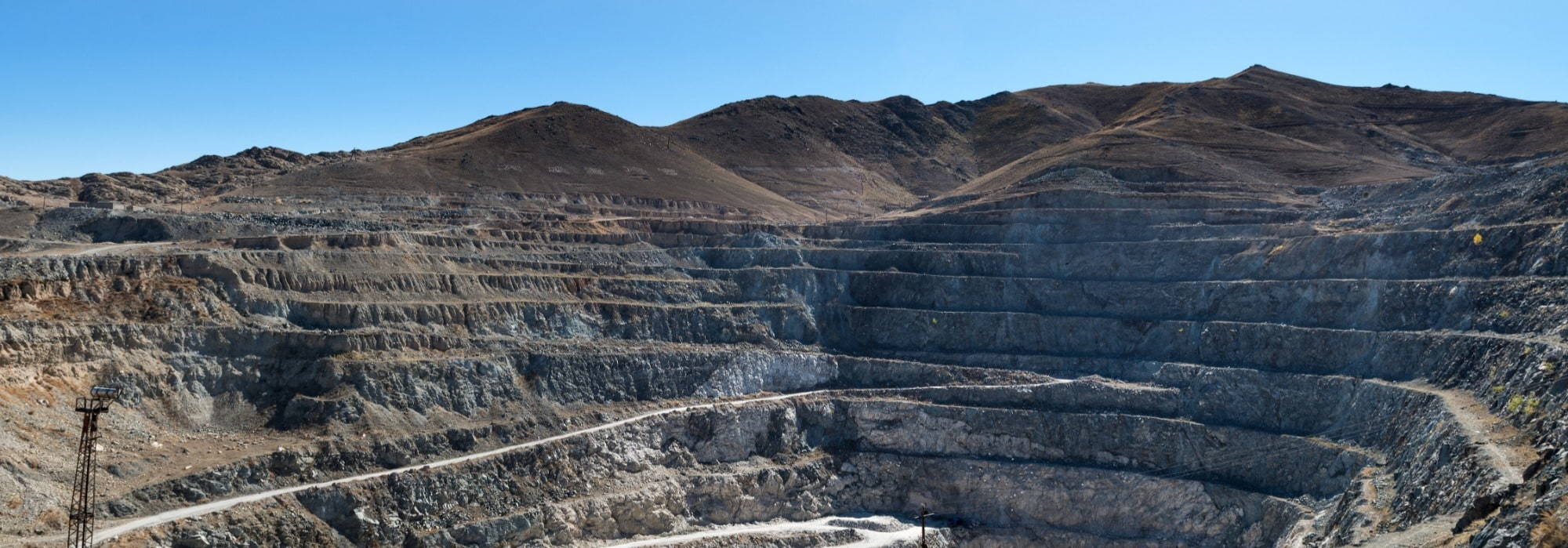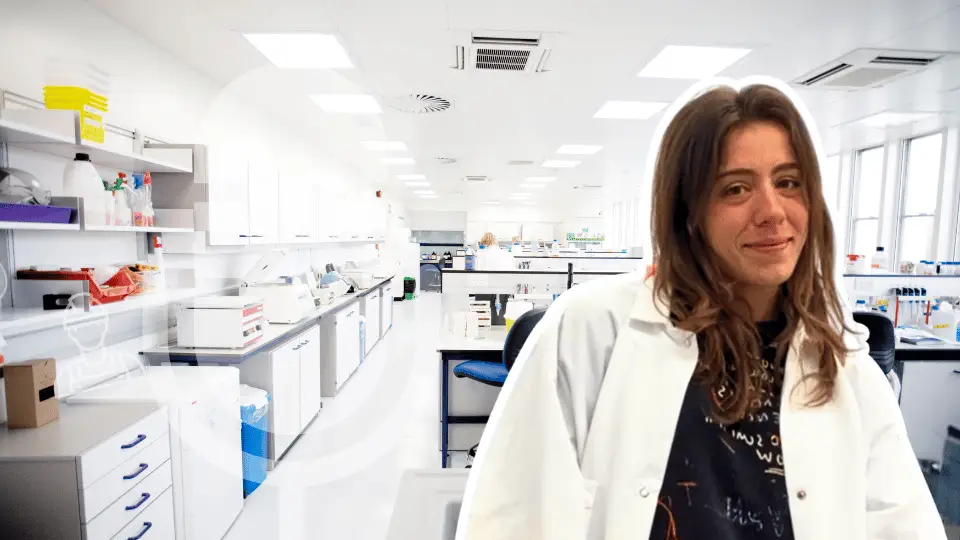5 Mining Projects To Watch In 2020
06 May, 20204:08As with many industries, COVID-19 has had a significant impact on the mining sector. Planned...

As with many industries, COVID-19 has had a significant impact on the mining sector. Planned projects have stalled or been delayed and ongoing operations have been put temporarily on hold.
However the news is not all bad. There are many projects still in operation with revised social distancing, hygiene and safety procedures in place; and many global mining operations due to come back online once lockdown protocols are lifted.
Here are 5 leading mining projects that will continue to create jobs and further operations throughout 2020.
Quellaveco Copper Mine - Peru
The Moquegua region of Peru is home to an estimated 1.3 billion tonnes of copper ore reserves, grading 0.55% copper - one of the world’s largest undeveloped copper deposits.
Anglo American have been developing the area, having already invested around $450 million in early groundworks and engineering, including a tunnel and barrier for the diversion of the Asana river, an access road, construction camps and water infrastructure for construction and operations.
It’s thought that the total cost of developing the mine could be as high as $5.3 billion and will create 9,000 construction jobs followed by 2,500 operational jobs. Plans were for the first copper to be produced from the mine in 2023, though development has slowed due to the impact of Covid-19.
Workers were withdrawn from the site in April, but the Peruvian Government has announced that lockdown restrictions will be eased on the country’s mining sector. Anglo American have yet to confirm whether this means a return to work on Quellaveco, or what steps will be taken to ensure worker safety, but with the high value of the recoverable resources it is likely they will want to restart development as early as safely possible.
Sonora Lithium Project - Mexico
Sonora, Mexico, holds one of the world’s largest lithium resources and benefits from being both high grade and scalable.
The mine is being developed by Sonora Lithium Ltd. (SLL) a joint venture of Bacanora Minerals (77.5%) and Ganfeng Lithium (22.5%). It’s thought to hold proven and probable reserves of 243.8 million tonnes containint 4.5 million tonnes of lithium carbonate-equivalent.
Sonora will be an open-pit operation being developed in two stages, with the first having a production capacity of 17,500 tonnes per annum of lithium carbonate. Stage two will double the production capacity to 35,000tpa. It’s estimated the initial mine life will be 19 years.
Engineering work was due to be completed in Q1 of 2020, but Bacanora reported that the impact of Covid-19 was delaying the project. They now expect engineering work on stage one to be complete in Q3 of the year.
"Administrative staff, based in Hermosillo, are now working remotely. The pilot plant will continue to operate on day shift until the next batch of kiln and lithium samples are shipped to the USA and China, or until the company is required to temporarily close its operations following a government directive," the company said in a statement.
South Deep Gold Mine - South Africa
Located 45km south-west of Johannesburg is the largest gold mine in the world, by reserves. Operating since 1961, the South Deep mine contains 32.8 million ounces of gold, at depths of up to 2,998m below the surface (it is also the seventh deepest mine in the world).
South deep has been operated by Gold Fields since 2006, and uses two shaft systems; the South Shaft complex and the Twin Shaft complex. In 2018 it produced 157,100 oz of gold, and it’s expected to continue operating until 2029.
Following a production halt in March, Gold Fields announced at the end of April that they were commencing a staged incremental ramp-up plan that would include recalling employees and implementing COVID-19 operating procedures. Initially they are operating with 50% of active staff, which they hope to increase following further South African government restrictions being lifted.
They are also trialling new techniques including remote loading, which allows a continuous operation.
“We’re trialling remote loading from surface, where we have a person sitting in the control room that’s operating a loader 3 km under the ground beneath him. It’s very exciting to see that kind of technology being rolled out,” said Gold Fields CEO Nick Holland.
Gakara Mine - Burundi
Led by Rainbow Rare Earths, Burundi’s Gakara mine is estimated to be the highest grade rare earths mine globally, and the only producing rare earths mine in Africa.
Located in Western Burundi, approximately 20km south-southeast of Bujumbura, the mine covers a combined area of approximately 135km2. Demand has been growing steadily for rare earth magnets, with the elements used in the manufacture of electric vehicles, smartphones, wind turbines and generators and other electronics.
“There is no longer any real debate around whether the demand for rare earth magnets is going to grow – the question is how quickly and how far,” says Rainbow Rare Earths CEO Martin Eales.
The mine began production in December 2018, quickly ramping up to a rare earth concentrate production run rate of around 400tpm.
Despite the spread of COVID-19, Rainbow Rare Earths have said that activity at Gakara has continued largely unhampered by restrictions.
"The impact of COVID-19 has been widespread; however, our operations have remained largely unaffected. We have introduced a number of sanitation steps for our workers, and will continue to comply with any in-country restrictions that may be imposed," George Bennett, the chief executive officer of Rainbow said in a statement.
“Our longer-term priority remains the definition of a maiden JORC resource, and work is nearly completed on the first stage, which we look forward to announcing shortly.”
Boddington gold mine - Australia
Australia’s largest gold mine is located in Boddington, Western Australia. First opened in 1987, the mine ceased operations in 2001 after the known oxide ore resource had been processed. However a further 20 million ounces was identified as a bedrock resource in 2002 and an expansion project was launched in 2006. The expanded mine was officially started up in July 2009 with an estimated 20 year lifespan. It first reached a production of two million ounces of gold in August 2012.
Boddington’s operations involve open-cut mining from two large pits, with a capacity for 850,000 oz of gold and 30,000t of copper per year.
In February 2020, Boddington moved towards a more automated process after securing a $150 million investment in a Caterpillar autonomous haulage system with a fleet of autonomous CAT 793F haul trucks. While certainly a benefit during the Covid-19 crisis, the investment could also set an important precedent for smart mining in the future.
Looking for your next job in the mining industry?
NES Fircroft recruits engineering and technical professionals for jobs throughout the global mining and resources industry. Register with us today to find out about the latest job opportunities as they arise.










